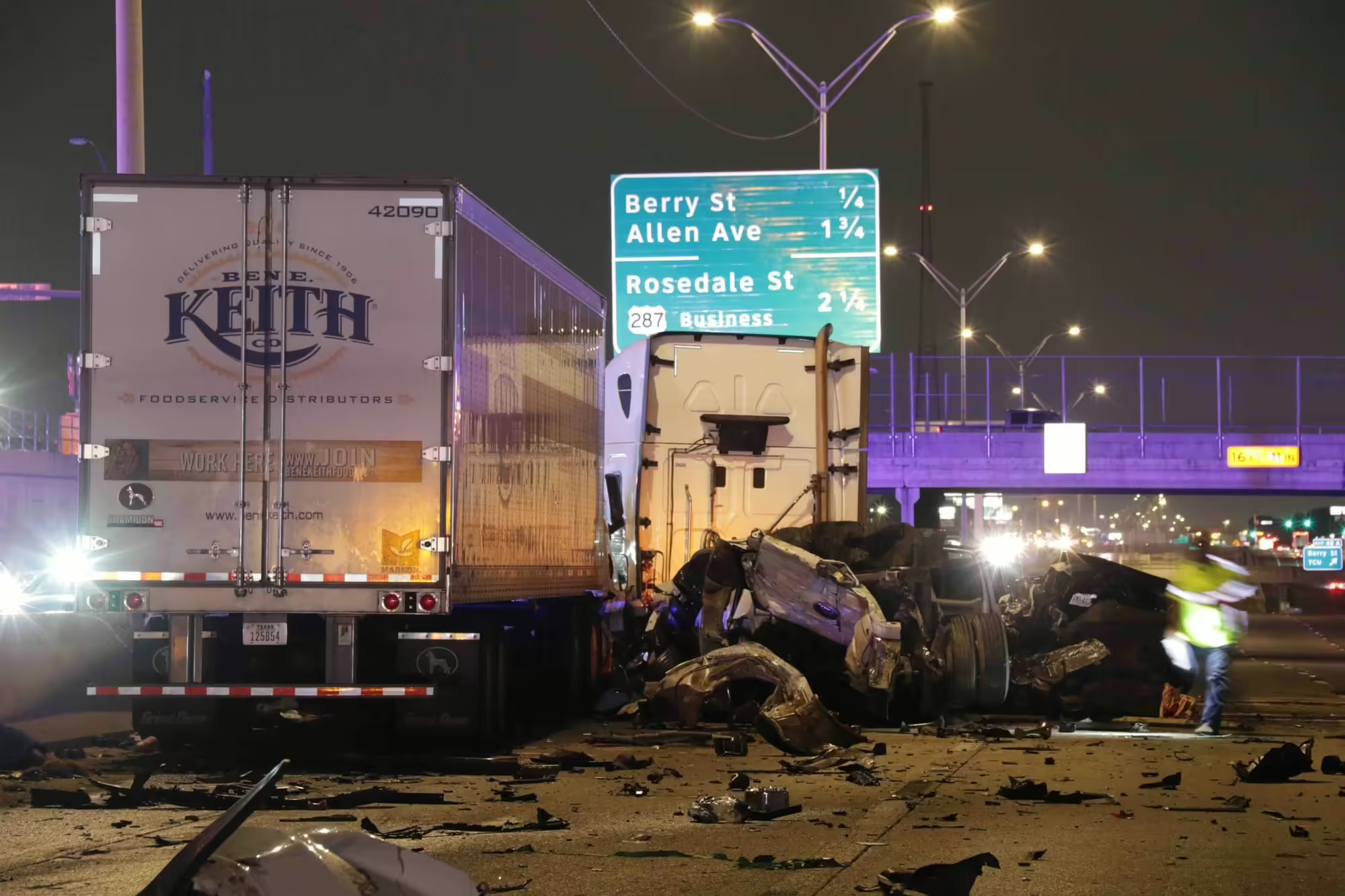
Undefeated Texas 18 Wheeler Truck Accident Lawyers Win Record Settlement in Deadly Fort Worth I-35 Crash

Zehl & Associates is pleased to announce a record-breaking $35 million settlement on behalf of the Longoria family – the #1 largest single-plaintiff personal injury settlement in Fort Worth history.
A Ben E. Keith truck crashed into Susana Longoria, tragically killing her at the scene. Susana had pulled over on the left side of Interstate 35 in Fort Worth, Texas after being involved in a minor fender-bender. She was only on the road for around 2 minutes before Ben E. Keith driver, Larry Czaplinski, crashed into her and others on the shoulder of the road. She left behind her parents and young daughter.
Our Texas truck accident lawyers quickly discovered that the portion of Interstate 35 where the crash occurred has “No Trucks in Left Lane” signs posted along the route. Despite this, Ben E. Keith’s driver was in the left lane leading up to the crash.
The team at Zehl dispatched its accident reconstruction team to photograph and analyze the scene of the crash, as well as experts who performed downloads of the ECM device (black box) on Ben E. Keith’s 18-wheeler. The results of these inspections uncovered that the Ben E. Keith driver had his throttle maxed out at 100% leading up to the crash. The data also showed that the driver never applied his brakes before the crash, indicating he was not paying attention to the road ahead of him.
This matched up with the body camera footage Zehl obtained from the responding Fort Worth police officers, which showed Ben E. Keith’s driver admitting at the scene of the crash that he “looked up” prior to impact – confirming that he was not paying attention to the road and vehicles ahead of him.
Ben E. Keith adamantly denied gross negligence leading up to trial. However, during the course of the truck accident lawsuit, Zehl & Associates discovered that the safety department at Ben E. Keith, one of the nation’s largest food distributors, removed all dash cameras from their vehicles before this crash occurred. Ben E. Keith in years prior had utilized a full-scale driver monitoring system that used both forward- and rear-facing cameras. At the time of the crash, though, Ben E. Keith did not have any cameras in any of its vehicles because the company had made the decision to remove them.
Zehl took the deposition of Ben E. Keith’s corporate represented and forced him to admit, under oath, that that removing the cameras decreased Ben E. Keith driver safety. He further admitted that having no cameras on a fleet of around 2,000 vehicles was far below the industry’s standard of care.
Zehl & Associates attorneys also discovered the driver’s cell phone was active at the time of the crash. Zehl Associates hired one of the best forensic cell phone examiners in the country, who downloaded the contents of the driver’s two cell phones, company tablet, and Apple Watch. The downloads showed the driver had an application open at the time of the crash on his company-issued cell phone. Because of this, Zehl’s distracted driving expert concluded that Ben E. Keith’s driver was distracted at the time of the crash.
Because this crash happened at night, Zehl & Associates investigated whether the driver was fatigued. By sending targeted discovery to certain medical providers, Zehl quickly learned that the defendant driver had untreated sleep apnea. Although he was diagnosed with sleep apnea in the years before the crash, Ben E. Keith’s driver never cleared that diagnosis while driving at night for Ben E. Keith.
Zehl & Associates had experience litigating cases involving fatigue-related crashes and knew that investigating driver fatigue would be central to this case. In essence, Zehl & Associate discovered that Ben E. Keith was dispatching a driver at night with untreated sleep apena. Zehl & Associates hired a world-renowned sleep expert who concluded that the Ben E. Keith driver was suffering from fatigue-related symptoms at the time of the crash. This matches up with the information Zehl obtained from the forensic download of the driver’s phone, which showed that the driver was awake during the day on the weekend before the crash, which is evidence that the driver suffered from an inverted sleep schedule. This compounded his fatigue and fatigue-related symptoms at the time of the crash.